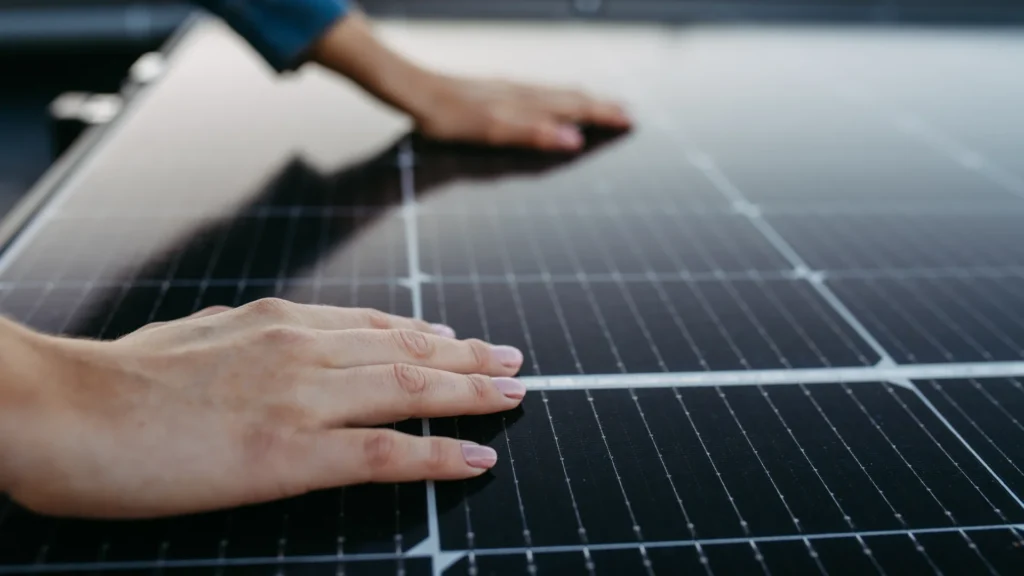
Solar energy has become an increasingly popular renewable energy source in recent years. As the world moves towards more sustainable and environmentally-friendly power sources, solar panels have emerged as a viable option for homes and businesses. However, one question that often arises is how does the efficiency of solar panels change over time? While solar panels are known to be low-maintenance and long-lasting, it is important to understand the potential factors that could affect their performance over time.
To answer this question, we must first understand how photovoltaic cells work and what factors can impact their efficiency. From there, we can explore the potential loss of efficiency over time and the importance of monitoring panel performance regularly. Additionally, we will discuss how technology can help maintain efficiency levels and how proper installation practices can maximize panel output. Finally, we will examine strategies for extending the lifespan of your solar panels and assess the long-term viability of solar energy as a whole.
The section on photovoltaic cells explains the fundamental principles underlying light conversion into electrical energy. Photovoltaic cells comprise semiconducting materials such as silicon, which can absorb photons from sunlight and convert them into electricity. The process involves the generation of an electric field across a p-n junction that separates positively charged holes from negatively charged electrons. When the semiconductor material absorbs light, it frees up electrons that move towards one electrode while holes move in the opposite direction towards another electrode.
The efficiency of solar panels depends on several factors, including the type and quality of materials used in their construction, their exposure to sunlight, and other environmental conditions such as temperature and humidity. The efficiency rating refers to how much energy a panel can produce relative to its size or area. Higher efficiency means more power production per unit area or lower cost per watt.
Efficiency degradation over time is a natural phenomenon that occurs as solar panels age and are exposed to various environmental factors, including heat, moisture, UV radiation, dirt accumulation, and other physical damage. As solar panels degrade over time, their ability to generate electricity decreases gradually until they reach a point where they no longer function properly or fail altogether.
Despite these challenges associated with long-term use, photovoltaic technology remains an increasingly popular source of renewable energy for residential and commercial applications. Advances in manufacturing techniques and materials science have enabled newer generations of solar panels to offer higher efficiencies at lower costs than ever. Researchers continue to explore new ways to improve performance while simultaneously reducing costs to make this technology accessible for everyone who seeks alternative sources for power generation without compromising on freedom or sustainability.
Solar panel efficiency is affected by several factors, including weather conditions, temperature, and exposure to sunlight. Weather conditions such as cloud cover can significantly reduce the amount of sunlight reaching the solar panels, affecting their efficiency. High temperatures can also cause a decrease in efficiency due to increased resistance within the panel’s components. Finally, exposure to sunlight is critical for maximum energy production as shading or obstruction from nearby objects can lead to reduced output. Understanding these factors is essential when designing and installing solar systems to optimize performance and maximize energy production.
Exploring the impact of various weather conditions on the performance of photovoltaic devices remains a crucial area of research in renewable energy. Solar panels depend highly on sunlight, but different weather conditions can affect their efficiency. For instance, cloudy days and frequent rainstorms can reduce the amount of direct sunlight available to solar panels, leading to decreased power output. However, it is worth noting that solar panels still generate some electricity even under such conditions.
Another factor that affects solar panel efficiency is temperature. High temperatures may cause solar cells to lose efficiency at a rate proportional to how much they exceed their optimal operating temperature range. On the other hand, low temperatures have been found to increase panel efficiency due to lower resistive losses within the cell’s internal circuitry. In summary, while weather conditions are known to affect solar panel efficiency, advancements in technology have made modern-day panels more resilient and efficient overall.
Temperature has been found to play a crucial role in determining the performance of photovoltaic devices, with high temperatures causing solar cells to lose efficiency and low temperatures increasing their efficiency due to reduced resistive losses. At high temperatures, an increase in temperature results in an increase in electron-hole recombination rates and a decrease in open-circuit voltage, leading to decreased efficiency. Additionally, the increased temperature causes an increase in the cell’s dark current, further reducing its output power. The effect of elevated temperature on solar panel efficiency is particularly pronounced for thin film technologies such as amorphous silicon or CdTe.
On the other hand, low-temperature conditions have been shown to enhance the efficiency of solar panels by reducing resistive losses that occur within the device. This is because electrons move more easily through materials with less resistance at lower temperatures, leading to higher output power. However, suppose the temperature drops below freezing point. In that case, some solar panels may experience damage from ice formation on their surface or thermal expansion/contraction cycles resulting from repeated freezing and thawing events. Thus designers of photovoltaic systems need to consider both hot and cold weather conditions when designing and installing these systems to operate optimally throughout their lifetime.
The impact of exposure to sunlight on photovoltaic devices is a critical factor that designers and installers must consider to achieve optimal performance. Solar panels rely on sunlight to produce electricity, and the amount of energy they generate is directly proportional to the intensity and duration of their exposure. Solar panels can produce electricity at their maximum efficiency when installed in areas with high solar radiation levels.
However, prolonged exposure to sunlight can also lead to reduced efficiency over time due to module degradation, corrosion, and soiling. These effects can cause a decrease in the amount of electricity generated by the panel, leading to lower overall system performance. Therefore, proper maintenance and cleaning are crucial for maintaining the efficiency of solar panels over time. To ensure long-term performance, installers and designers need to consider not only the initial level of exposure but also how this will change over time due to weather patterns or changes in land use around the installation site.
The long-term performance of solar panels may be impacted by environmental factors that gradually degrade their effectiveness. One such factor is the potential loss of efficiency over time, which occurs for various reasons. First, the accumulation of dirt and debris on the surface of the panels can lower their capacity to absorb sunlight and decrease the amount of light reaching them. This results in decreased energy production and reduced efficiency.
Second, the effects of weathering can also lead to a loss in efficiency over time. UV radiation from sunlight can cause the degradation of materials used in constructing solar panels, leading to cracking or delamination. Moisture retention within panel materials can also cause corrosion or rusting, reducing panel effectiveness.
Thirdly, temperature fluctuations notably impact solar panel performance over time. High temperatures reduce voltage output from photovoltaic cells, while low temperatures increase it slightly but reduce current flow across them. Such changes affect overall energy production and therefore decrease panel efficiency.
In conclusion, environmental factors contribute significantly to solar panels’ potential loss of efficiency over time. The accumulation of dirt and debris on their surfaces, along with weathering effects such as UV radiation damage and moisture retention, can cause corrosion or rusting within panel materials leading to reduced effectiveness during operation periods, especially under high-temperature conditions that lower voltage output from photovoltaic cells while simultaneously increasing current flow across them thus causing negative consequences for overall energy production levels thereby reducing panel efficiency levels correspondingly.
Potential loss of efficiency over time is a significant issue regarding solar panels. It has been found that the efficiency of solar panels decreases by approximately 0.5% every year, which can result in a significant reduction in energy output over time. This is mainly due to various factors such as dust accumulation, shading, and aging of materials used in manufacturing.
Hence, monitoring the efficiency of solar panels becomes critical as it helps to identify any issues that may be causing the decrease in output. Regular monitoring enables you to catch these problems early on so that they can be addressed before they cause irreversible damage or impact overall system performance. For instance, if there is a sudden drop in energy production, you can investigate what might be causing the issue and take corrective action.
The importance of monitoring cannot be stressed enough, as it ensures optimal performance and extends the life span of your solar panel system. Here are four reasons why monitoring efficiency matters:
Solar panels have numerous benefits, such as low maintenance costs and reduced carbon footprint than conventional power sources like coal or gas-fired plants. Still, their effectiveness tends to wane over time due to various factors mentioned earlier. Therefore, it’s imperative to monitor their efficiency periodically so that any issues affecting their performance can be detected early on and rectified before they become costly problems down the line- maximizing ROI while minimizing the risk associated with unexpected equipment failure.
Advancements in technology have revolutionized the way solar panel systems are monitored and maintained, providing real-time data on system performance and enabling proactive measures to ensure optimal efficiency. One of the most significant technological advancements is monitoring software that allows remote access to a solar panel system’s performance data. This software can track energy production, identify potential issues, and provide alerts when maintenance or repairs are needed.
Another important technological advancement is the development of predictive analytics tools that use machine learning algorithms to analyze large amounts of data from solar panel systems. These tools can predict when a component may fail before it does, allowing for preventative maintenance before any damage occurs. This not only helps maintain efficiency but also reduces downtime and repair costs.
In addition to monitoring and predictive analytics tools, there have been advancements in solar panel materials. For example, some manufacturers now use anti-reflective coatings on their panels to increase efficiency by reducing reflection losses. Other manufacturers are experimenting with new materials, such as perovskite-based cells, that could increase efficiency.
Overall, technology has played a crucial role in maintaining the efficiency of solar panels over time. With real-time monitoring software, predictive analytics tools, and advancements in materials science, it is now possible to maximize energy production while minimizing downtime and repair costs. As these technologies continue to evolve, we can expect even greater improvements in the efficiency and reliability of solar panel systems.
Maximizing the efficiency of solar panels is crucial for optimizing their energy output. This can be achieved through proper placement, selection of the right type of panel, and calculating the optimal number of panels needed. The placement of solar panels must consider factors such as shading, direction, and tilt to ensure maximum exposure to sunlight. Choosing the right panel type involves considering efficiency ratings and cost-effectiveness. Finally, calculating the optimal number of panels requires an analysis of energy needs and available space to determine the most efficient configuration.
The strategic placement of solar panels ensures optimal exposure to sunlight and maximum energy generation. The amount of energy generated by the solar panel system depends on various factors such as location, season, time of day, and weather conditions. Therefore, it is important to consider all these factors when deciding where to install solar panels.
Solar panels should ideally be placed in a location that receives maximum sunlight throughout the day to maximize energy output. This can be achieved by placing them in an unshaded area with no obstructions, such as trees or buildings that could block the sun’s rays. Additionally, the angle at which the panel is mounted significantly determines its efficiency, affecting how much sunlight hits the panel’s surface. Correctly adjusting the angle based on geographic location and seasonal changes can increase overall energy production significantly. Proper placement of solar panels maximizes their efficiency and saves money by reducing maintenance costs associated with shading or damage from falling debris caused by nearby trees or buildings.
Selecting the appropriate type of panel is a crucial decision in optimizing the performance and output of a solar energy system. The efficiency and reliability of solar panels can vary depending on several factors, such as the location, climate, and intended use. Therefore, it is essential to consider various types of panels before making a final decision.
To choose the right panel type, there are some important factors to consider: – Monocrystalline or polycrystalline: Monocrystalline solar panels have higher efficiency but are more expensive than polycrystalline panels. – Thin-film or crystalline silicon: Thin-film panels are less efficient than crystalline silicon but can be more flexible and lightweight. – Efficiency rating: A higher efficiency rating means the panel will produce more electricity per square meter. – Durability: Panels should withstand harsh weather conditions like wind, hailstorms, and extreme temperatures. – Warranty: Ensure that the manufacturer’s warranty covers any defects or malfunctions so you can get repairs or replacements if needed.
Considering these factors when selecting a solar panel for your energy system, you can optimize its performance and output while ensuring its durability over time.
Determining the optimal number of panels for a solar energy system is a critical task that requires careful consideration of various factors such as location, electricity usage, and weather patterns to ensure maximum output and cost-effectiveness. The number of solar panels required depends on the electricity needed to power the home or business. To calculate the optimal panel number, it is important to understand how much electricity a panel can generate in ideal conditions.
Solar panels are rated based on their wattage output under standard test conditions (STC), which assumes direct sunlight at 25°C. However, actual performance may vary depending on temperature, shading, and other environmental factors. A general rule of thumb is that each panel generates about 1kWh per day in optimum conditions. Therefore, to determine the optimal number of solar panels needed for a system, one must first estimate daily energy consumption needs and then divide by the average output per panel. The table below provides an example calculation for a home that consumes 30 kWh/day:
Electricity Consumption | Average Output per Panel | Optimal Number of Panels |
|
|
|
30 kWh/day | 1 kWh/panel | 30 |
By calculating this information beforehand, individuals can make informed choices when investing in solar energy systems and ensure they receive maximum efficiency while minimizing costs over time.
Regular maintenance and cleaning are crucial to extending solar panels’ lifespan. This includes removing any debris or dirt that may accumulate on the panels, as these can decrease their efficiency over time. Additionally, damaged parts should be replaced promptly to ensure optimal performance. Upgrading to more efficient panels can also improve energy production and reduce the need for frequent maintenance or repairs. By following these key points, solar panel owners can maximize the longevity and efficiency of their investment.
Maintaining the integrity of solar panel systems requires prompt replacement of any damaged parts, as this ensures optimal functioning and prolongs the system’s lifespan. Solar panel damage can occur for various reasons, such as weather conditions, falling debris or improper installation. Identifying and replacing damaged components immediately is crucial, as even minor damage can impact the system’s overall efficiency.
In addition to replacing damaged parts, it is also important to ensure that replacement parts are compatible with existing components. Compatibility issues can arise when newer or updated components are used in an older system, reducing efficiency and potentially damaging effects on other system parts. Therefore, solar panel owners must seek professional advice before purchasing and installing new components in their existing systems. Proper maintenance through timely replacement of damaged parts and compatibility checks ensures that solar panels continue operating at peak efficiency throughout their lifespan.
The optimization of solar panel systems can be achieved by upgrading to newer, more advanced panels that incorporate the latest technologies and improvements in design. Upgrading to more efficient panels is a beneficial option for those who seek to maximize the energy output of their solar power system. Here are some advantages of upgrading to more efficient solar panels:
Overall, upgrading to more advanced solar panel technology benefits homeowners seeking greater energy efficiency and savings. These advancements allow for increased power production, better performance under various lighting conditions, extended product life spans, and added property value – all key elements enabling individuals to journey towards greater freedom through renewable energy sources.
Examining the potential for sustained implementation of solar energy requires a thorough evaluation of its long-term viability. While solar power has been recognized as a clean and renewable energy source, there are concerns about the sustainability of this technology. Solar panels are generally designed to last for 20-30 years, but their efficiency reduces over time due to various factors such as weather conditions, dust accumulation, and wear and tear.
One critical factor affecting solar energy’s long-term viability is technological advancement. Solar panel efficiency can be improved regarding conversion rate and durability as with any technology. Researchers are constantly developing more efficient materials and designs that withstand harsh environmental conditions like heat, cold temperatures, snow loads, and wind pressure. These advancements have made it possible to install solar panels in regions where they were previously considered impractical or unfeasible.
Another important aspect is maintenance. Proper care and maintenance of solar systems can help extend their lifespan while maintaining optimum performance levels. Routine cleaning, inspection for damaged or malfunctioning parts, and replacing worn-out components on time will ensure the system operates efficiently throughout its service life. This also reduces repair costs associated with breakdowns or replacements due to neglect.
Lastly, policies are crucial in promoting the long-term adoption of renewable energy sources such as solar power. Governments must establish favorable policies that encourage investment in research and development programs to improve technical efficiency while reducing production costs making them affordable for everyone, irrespective of income level. Additionally, incentives like tax credits or rebates can help promote the installation of new systems while reducing overall carbon footprint levels by encouraging people who may not have otherwise considered installing these systems.
In conclusion, examining the long-term viability of solar energy requires a comprehensive approach that considers technological advancements, proper maintenance practices, and supportive government policies geared towards promoting sustainable development strategies across all sectors globally. The increasing demand for affordable green energy solutions presents an opportunity for innovation in this field; the future of solar energy looks bright, and with continued investments in research, development, and adoption policies, it is possible to overcome the challenges facing its implementation.
The long-term viability of solar energy is contingent upon technological advancements, proper maintenance practices, and supportive government policies. To ensure the efficiency of solar panels over time, we must continue to innovate and improve upon existing technologies. This can involve developing more advanced materials for solar cells or finding ways to increase their efficiency through better design.
Proper maintenance practices are also critical in ensuring the longevity of solar panels. This includes regular cleaning and inspection to identify any issues before they become major problems. Additionally, investing in quality installation services is important to ensure that panels are installed correctly and securely.
Supportive government policies play a crucial role in encouraging the adoption of solar energy on a larger scale. This can include financial incentives such as tax credits or rebates for installing solar systems and regulations requiring new buildings to incorporate renewable energy sources like solar into their designs.
Despite these challenges, there is reason for optimism regarding the future of solar energy. As technology advances and costs decrease, more individuals and businesses will be able to take advantage of this clean and renewable power source. By working together towards this goal, we can create a brighter future for generations without sacrificing our freedom or quality of life.
In conclusion, the efficiency of solar panels is affected by various factors such as temperature, shading, and age. The initial efficiency of a solar panel may decrease over time due to natural wear and tear caused by weather conditions and other environmental factors. However, with proper monitoring and maintenance through advanced technology solutions, the longevity of a solar panel can be extended.
Furthermore, maximizing the efficiency of solar panels requires proper installation techniques that ensure optimal exposure to sunlight and minimal shading. Additionally, increasing the lifespan of solar panels involves regular cleaning and inspection to identify any potential issues that may affect their performance.
Solar energy remains a viable long-term solution for sustainable energy production despite the potential loss of efficiency over time. As technology advances in this field, there is an optimistic outlook for even greater efficiency gains in the future. Overall, understanding how to maintain and maximize the efficiency of solar panels is critical for achieving long-term benefits from this renewable energy source.
Solar panels have become increasingly popular as a renewable energy source, but many wonder if they can generate power during cloudy or rainy days. The answer is yes, albeit with lower efficiency compared to sunny days. Clouds and rain can significantly reduce the sunlight that reaches solar panels, lowering their output power. However, modern solar panel technology has improved in recent years to make them more efficient in low-light conditions, such as cloudy or rainy days. Additionally, certain solar panels are designed specifically for use in areas with less sunlight. While it’s true that solar panel efficiency decreases over time due to wear and tear, regular maintenance and cleaning can help mitigate this issue and ensure optimal performance over the long term.
The efficiency of solar panels is a crucial factor to consider when choosing the best type for your needs. Different types of solar panels have varying levels of efficiency, which can change over time due to various factors such as weather conditions and maintenance practices. Today’s most common types are monocrystalline, polycrystalline, and thin-film solar panels. Monocrystalline solar panels are known for their high-efficiency rate but are more expensive. Polycrystalline solar panels are less efficient than monocrystalline but offer a more affordable option. Thin-film solar panels may be less efficient than other types, but they are cheaper and can be easily installed on curved surfaces. Understanding how different types of solar panels compare in terms of efficiency over time is essential in making an informed decision when installing a system that will provide long-term benefits while minimizing environmental impact.
Solar panel efficiency is affected by extreme temperatures, both hot and cold. During very hot weather, solar panels can experience a decrease in efficiency due to increased temperature. This is because the electrical conductivity of the materials used in solar cells decreases as they get hotter, which results in less energy being generated for each unit of sunlight that hits the panel. On the other hand, during very cold weather, solar panels can also experience a decrease in efficiency due to a decrease in temperature. This is because cooler temperatures reduce the amount of energy that can be produced by solar cells, resulting in lower overall performance. Therefore, it is important to consider local climate conditions when designing and installing solar panels to ensure optimal efficiency over time.
Recycling or disposing of solar panels is possible at the end of their lifespan. As photovoltaic technology advances, decommissioned solar panels will only increase. Recycling old solar panels can be an environmentally friendly option as it reduces waste in landfills and allows for reusing valuable materials such as silicon and glass. Current recycling technologies can recover up to 95% of a panel’s materials, but there are still challenges, including high costs and a lack of infrastructure. Governments and companies must invest in sustainable solutions for handling end-of-life solar panels to minimize negative environmental impacts.
Solar panel warranties are an important consideration for those investing in solar energy systems. Generally, these warranties cover defects and malfunctions in the panels and other components such as inverters and mounting equipment. Most warranties also include a performance guarantee, which ensures that the panels will produce a certain amount of power over their lifetime. However, it is important to note that warranties vary between manufacturers and installers, with some providing longer coverage periods or more comprehensive guarantees than others. It is essential for consumers to carefully review the terms of any warranty before purchasing to ensure they are adequately protected against potential issues down the line. Understanding how solar panel warranties work can help individuals make informed decisions about their investment in renewable energy technology.
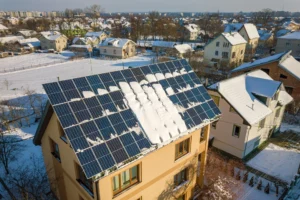
How much Electricity does Solar generate in Winter Months? How much Electricity does Solar generate in Winter ? Solar energy has become an increasingly popular
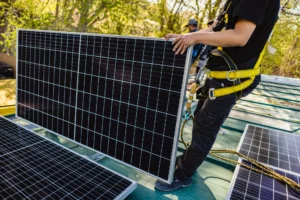
How Do I Compare The Performance And Efficiency Of Different Solar Panel Brands And Models? Solar energy is an increasingly popular renewable source for homeowners
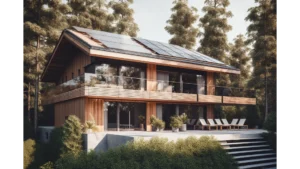
Can I Use Solar Power For Heating And Cooling My Home? Solar power has become an increasingly popular alternative to traditional energy sources as people

Will I Still Have Electricity During A Power Outage If I Have Solar Panels? During natural disasters or other emergency situations, power outages can occur
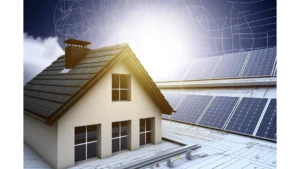
Efficiency Of Residential Solar Systems Residential solar systems have become increasingly popular as homeowners look for ways to generate their own electricity and reduce reliance